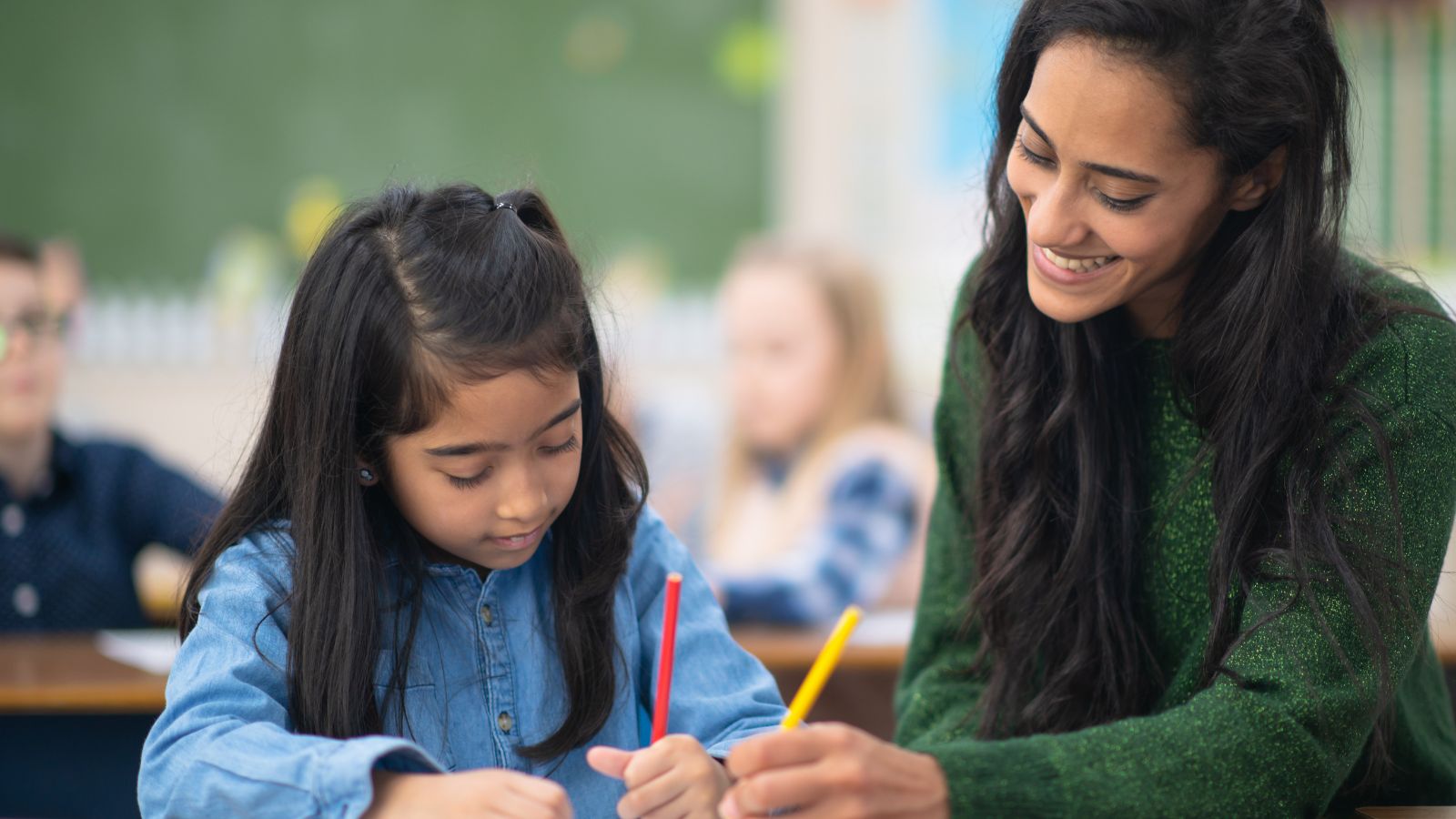Why Women’s education in India is important ?

Women’s education in India is growing steadily because from a meagre 8.9% in 1951 it has jumped to 77% according to the World Bank India report.
Women can contribute significantly towards nation building because they are the other half.
An educated woman can fend for herself and family and provide good nutrition and education to her children.
Since women are just as capable of contributing to national development in any field as men, it’s imperative for both boys and girls to contribute to national development.
Whether it’s the armed forces or any field, woman have shown their mettle that they are not inferior to men.
Notable here is the achievement of Ms. Shyamala Gopalan, better known as the mother of the current VP of USA Ms. Kamala Harris.
Born to educated parents in Chennai, Ms. Gopalan pursued higher studies in nutrition and endocrinology at the University of California in Berkeley.
An educated mother educated her children well, resulting in Ms. Kamala Harris becoming the VP of the USA. An educated woman leads to the creation of a mature society which treats women on par with men.
Moreover, coeducational institutions foster mutual respect and competition among learners.
India has many examples of pioneering work to promote women’s education in India:
Beti Bachao Beti Padhao
Sukanya Samriddhi Yojana
Balika Samridhi Yojana
Mukhyamantri Rajshri Yojana
Mukhyamantri Laadli Yojana
CBSE Udaan Scheme
National Scheme of Incentives to Girls for Secondary Education
Mukhyamantri Kanya Suraksha Yojana
Mazi Kanya Bhagyashree Scheme
Nanda Devi Kanya Yojana
Government’s scheme promoting women’s education in India
Some Government’s scheme to promote women’s education in India are:
Right to Education– Every child, whether male or female, will receive free & compulsory education between 6 to 14 years because RTE is a fundamental right.
Kasturba Balika Vidyalaya- These are residential upper primary schools for Girls.
Rahstriya Madhyamic Shiksha Abhiyan–Providing girls’ hostel for secondary education of girls. It also encompasses opening middle schools within a reasonable distance so that girls can comfortably reach school.
Sarv Siksha Abhyaan: It promotes girl’s education by appointing additional women teachers, separate toilets for girls, & teachers’ sensitization programmes that promote girl’s education.
Udaan: To increase the enrolment of girls in prestigious institutions, CBSE provides free online resources to girls in class XI & XII.
STEM Education: To promote girls enrolment in STEM, the Government has increased the number of reserved seats in technical institutions such as IIT’s & NIT’s.
History of girl’s education in India
In the Vedic period, women attained knowledge with no restrictions on education. This was the Golden era as women seeking education were divided into two lots: Brahmavadinis and Sadyodvahas.
The Brahmavadinis can pursue lifelong education while the Sadyodvahas studied until they got married. There were many women poets and philosophers, such as Apala, Ghosha, Visvavara, Sulabha Maitreyi and Gargi.
The first boarding school for girls came up in Tirunelveli in 1821. It was an attempt by the Missionaries of the East India Company to get a foothold in southern India, which was more hospitable to colonizers.
Jyotiba Phule and his wife Savitribai Phule started the first school for Girls in 1848 in Pune. She was the pioneer of women’s education in India.
The University of Calcutta admitted female graduates to its degree programmes in 1878, making it one of the first Indian universities to do so, before any British universities.
They set up the first school for Girls at Kolkata in 1849, called the secular Native Female school, which was later known as the Bethune School.
Over the years, there has been remarkable improvement in women’s education in India with exclusive HEIs for Girls. This helps girls gain STEM education so that they are employable for tech roles.
With 29.2% of graduates in Bachelor of Engineering and Bachelor of Technology programs in 2019-20 being women, the percentage of female engineers has improved steadily over the years.
Kerala has the highest number of female engineers, followed by TN, Karnataka & Maharashtra having 20, 18, 16 & 12 percent of the total, respectively.
Globally, India produces more female engineers than many developed nations because adequate gender sensitization has fostered girl’s tech education.
Comparison of female Engineers
Percentage of female undergraduate students with engineering degree in India, Australia, Canada, the UK, and US.
| Country | % of women | year |
| Firstly Australia | 14% | 2010 |
| Then Canada | 21.8% | 2017 |
| Further, India | 29.7% | 2018 |
| United Kingdom | 17.57% | 2016-2017 |
| Finally United States | 19.7% | 2015-2016 |
The Government has made remarkable improvement to foster female education by forming sexual harassment committees in HEIs that protect the rights of girls.
Female education statistics in India
Since 2010, India has had a good female literacy rate.
In 2010, the female literacy rate was 80.35%. With time eventually, the rate has increased. Between 2010-2021, the female literacy rate in India has increased by 14.4%. In 2021, the rate was 91.95%. On a year-on-year basis, the literacy rate increased by 0.6% in 2021.
Problems of girl’s education in India
Women’s education in India is plagued by major socio-cultural issues, resulting from a patriarchal mind-set that prevents girls from getting educated. Many societies believe girls will have to be married off, so no point wasting money on their education.
The root cause of the problem is a patriarchal mind-set that considers women inferior to men and we should restrict them to household chores. Many a time’s non availability of schools in proximity hinders parents from sending girls to distant places.
The high cost of girl’s hostels in excellent schools can sometimes be a hindrance to a child’s education.
These problems are getting rectified with most schools in sub-urban areas providing transport facilities to children.
The Government has started many welfare schemes that promote women’s education because they are the other half. Their valuable contribution is crucial for the economy because women are equivalent to men.
Importance of girl’s education
Women are the other half of the society and once they get educated, they contribute economically to their family, society & country. Nations with educated women have a better a standard of living because they earn well to support their families.
Educated girls do not marry young because they want to be self-sufficient & mature before they begin a relationship. She can take care of children by giving them excellent education & nutrition because they are the future.
Besides, when we educate a girl, she becomes well informed and cannot be exploited because she knows to protect her rights and values.
Girl’s status has improved due to increased enrolment in higher education as they become self dependent and aware of their rights.
Moreover, girls who receive education contribute to national development as wealth creators, informed mothers and crisis support.
Women’s education rights
The GOI amended the constitution & inserted article 21A stating that- The State shall provide free and compulsory education to all children of 6 to 14 years in such manner as the State, may by law determine.
This is the Right to education, which ensures every child, male or female, has a right to get educated from the age of 6 to 14 years.
Moreover, the Indira Gandhi Single Girl Child Scholarship is a UGC scholarship scheme designed to empower girls in our country through education. Further, Indira Gandhi Single Girl Child Scholarship compensates for the direct cost of higher education for girls.
Such schemes have fostered girls’ education, since girls are no less capable than men when they are given ample opportunities & a conducive environment.
From the likes of Kalpana Chawla, Mrs. Indira Gandhi or Avni Chaturvedi, women have proved that, once given the opportunity, they can compete with men in all spheres.






